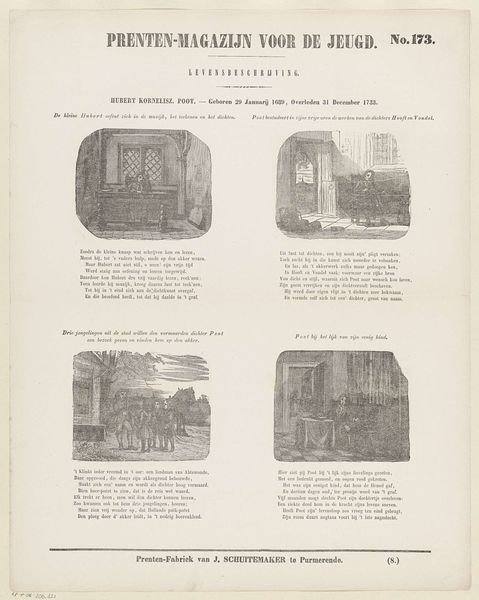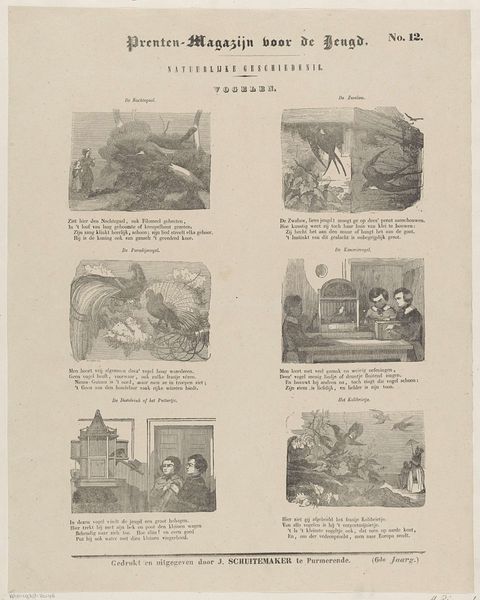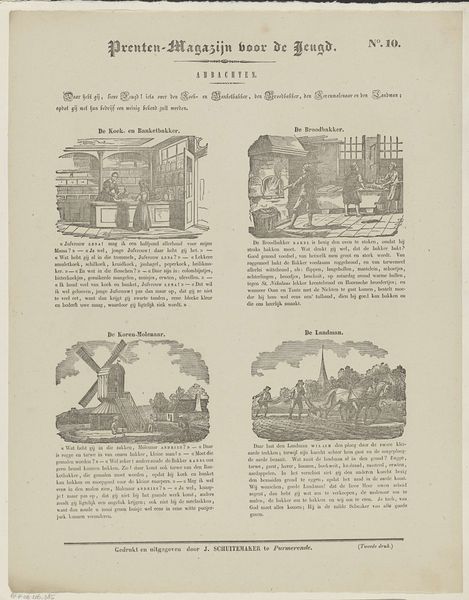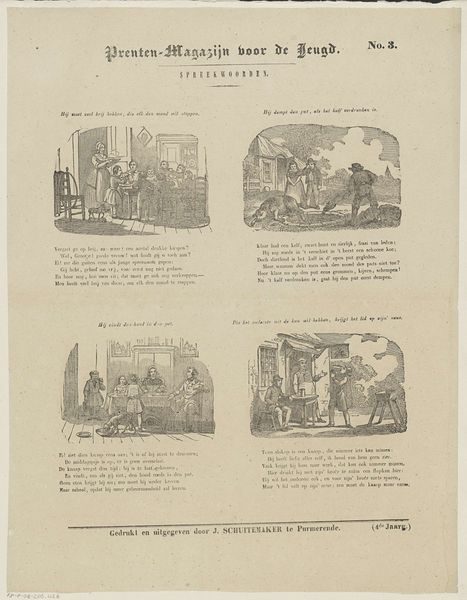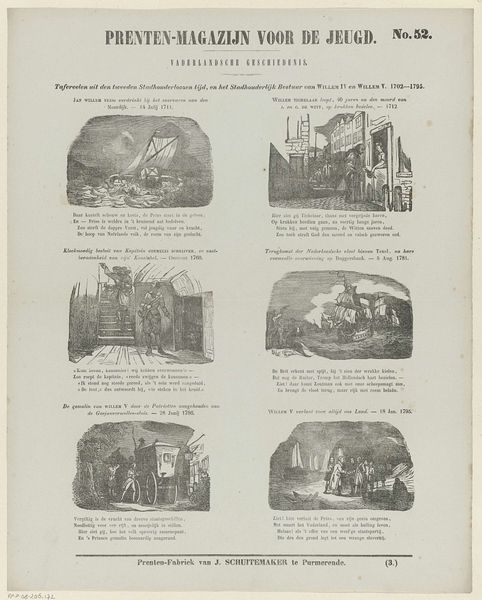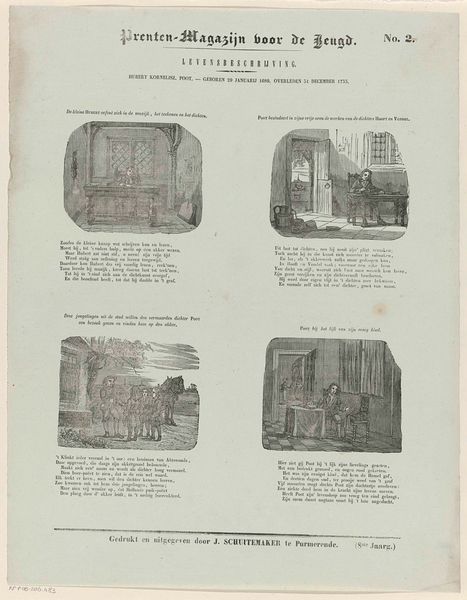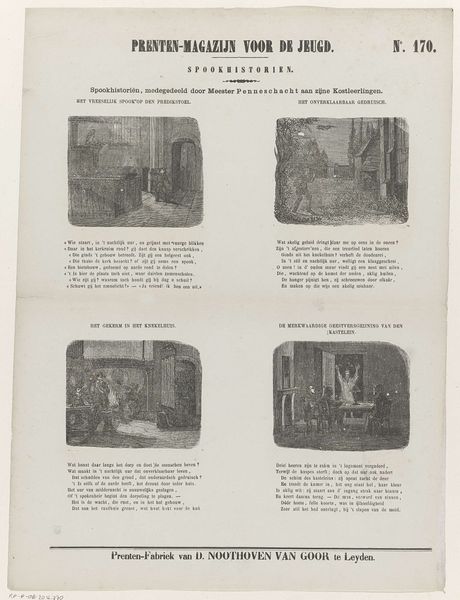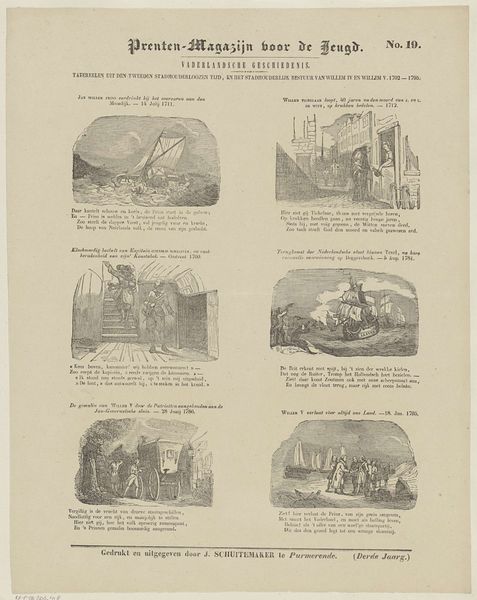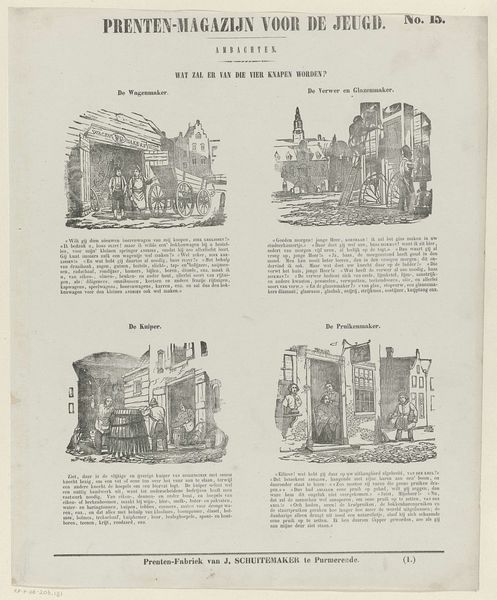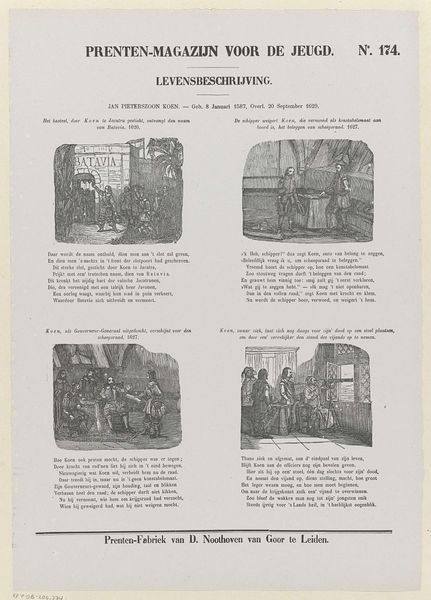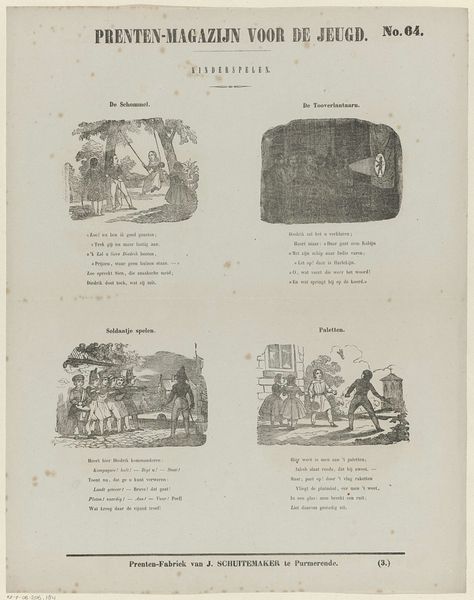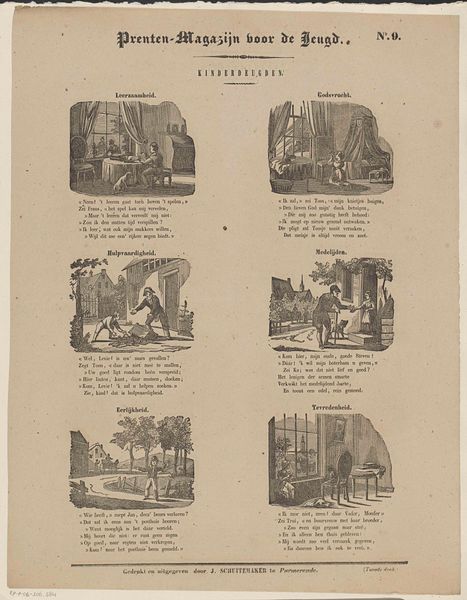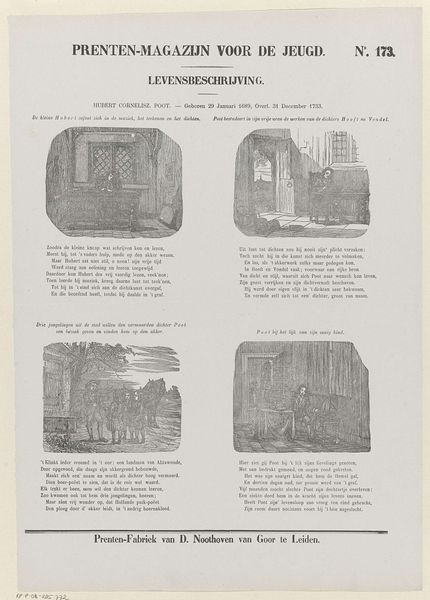
drawing, print, paper, ink, pen, engraving
#
drawing
#
aged paper
#
light pencil work
# print
#
old engraving style
#
sketch book
#
landscape
#
paper
#
personal sketchbook
#
ink
#
sketchwork
#
romanticism
#
pen-ink sketch
#
sketchbook drawing
#
pen
#
cityscape
#
genre-painting
#
storyboard and sketchbook work
#
sketchbook art
#
engraving
Dimensions: height 420 mm, width 335 mm
Copyright: Rijks Museum: Open Domain
Curator: Today, we’re looking at "Regen, wind, onweer en een zonsverduistering" or, in English, "Rain, wind, storm, and a solar eclipse." This print by Jan Schuitemaker dates back to 1842. Editor: It's visually arresting, even in its small format. There's a certain dramatic tension evoked by the juxtaposition of these different scenes; almost like a storyboard capturing distinct atmospheric narratives. The monochrome palette is striking, and the textures vary surprisingly from image to image. Curator: Exactly. Schuitemaker’s clever use of pen, ink, and engraving on paper gives each scene a very unique material quality, a specific weight. Notice how he manipulates line and shadow to create depth and texture? This indicates a deep understanding of printmaking as a means of reproduction and the wider magazine production context. The paper itself would have been manufactured locally. Editor: I agree. If you observe closely the application of those linear elements in 'De Regen', or 'The Rain', you can detect how he employs hatching to define the form of the architecture, whilst creating subtle gradations that evoke moodiness. And then in the 'De Wind' you can sense the turbulent drama he seeks, evoked by those very stylized and expressive graphic notations to capture movement and turbulence. Curator: That links it strongly to Romanticism. We know that in 1842 periodicals such as this provided popular content on various social themes of the era. Schuitemaker was printed and distributed locally for the youth market. The natural world held deep spiritual and aesthetic meaning. Editor: Perhaps so. Nevertheless I maintain that such symbolic and contextual details enhance the overall experience. It enriches your understanding, whilst reinforcing how powerfully graphic components work in orchestration to suggest both narrative and atmosphere within the distinct compositions. Curator: His formal manipulation of perspective gives spatial and environmental expression in these otherwise confined settings, something truly striking about this work. It gives us great insights into popular cultural tastes and distribution systems of the period. Editor: Ultimately, "Regen, wind, onweer en een zonsverduistering" compels one to look closely.
Comments
No comments
Be the first to comment and join the conversation on the ultimate creative platform.
